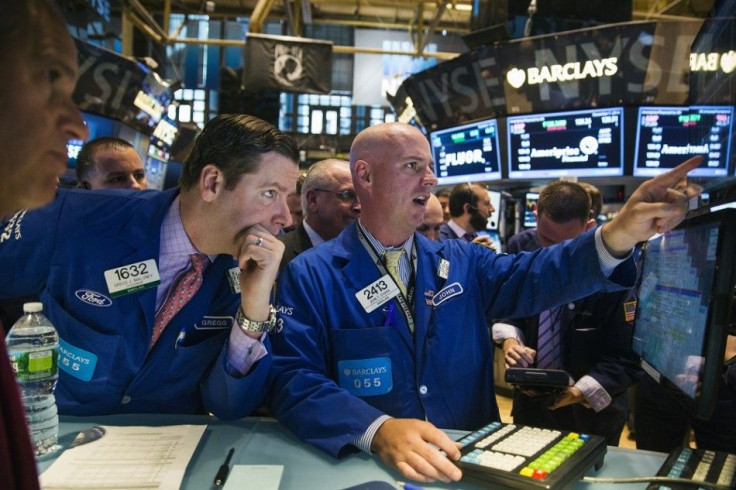Global Markets Overview – November 10, 2014

Resembling 'normal trade'
I remain tepid about November trade, having seen the US markets returning to record all-time highs and more talk on the Street is that we're heading for 8% to 10% gains over the next 12 months.
I completely understand this statement, as fundamentally, the S&P looks to be good value under 17 times earnings and in the next six months, micro and macro conditions will remain conducive to higher markets, considering rates will remain low and earnings high on the efficiency drive.
Trade, in the main, last week could be described as 'normal'. Good data pushed markets higher, earnings season in the US has backed bottom up views and the falling commodity price saw material plays lower all 'normal trading' situations.
However I continue to ask: what is 'normal' in the post-GFC unconventional monetary policy world?
The divergent central bank action still remains the largest single driver of equity markets. Japan is a case in point, with the yen continuing to take the Nikkei for a walk. The surprise increase to the BoJ's monetary base to ¥80 trillion from ¥70 trillion sparked USD/JPY to move to ¥115 and took the Nikkei up to 16880. Similar conclusions can be drawn for European indices.
With the Fed now out of the market, other global central banks are picking up the slack to further depress volatility with monetary policy. Europe and Japan, in particular, will continue to be as proactive as possible to battle stagnating inflation and the elusive goal of sustained economic growth in their respective economies.
The news from Tokyo and Frankfurt last week has seen markets returning to sub-1% intraday moves and highly accommodative monetary policy, once again depressing volatility. This point has been highly visible over the past four weeks of trade and is quite amazing considering the leads that come from the end of September. Europe, the US and north Asia have seen three consecutive weeks in the green while the ASX has been up three of the past four weeks.
The trading volumes of the past month are also something that goes against the statement of 'normal trade'. Disregarding the extreme events of the GFC in 2008, the European sovereign debt crisis in 2010 and the US debt downgrade in 2011; October saw the largest spike in overall market volumes in nearly a decade. These volumes are like to fall off slightly in November, which is why I remain tepid on November as a month. It does illustrate, however, how strong a play macro intervention is to global trade.
Ahead of the Australian open
October has seen the ASX once again becoming a defensive paradise. The rally in the likes of the banks, Telstra, the supermarket conglomerates and CSL shows that investors continue to hunt the return of capital rather than growth. Plus, it's hard to see this changing anytime soon considering rates in the US, Europe and Australia are not moving north in the foreseeable future (the US will be the earliest and that is still six to twelve months off).
Based on the futures close from Saturday, we are calling the market down 14 points with just WBC turning ex-dividend, the market would open dead flat if not for this event. Something to put on your radar is Uranium, which jumped 5% over the weekend on news the Japanese are going to reopen two nuclear power plants, while gold bounced back having been friendless most of last week. Watch stocks with exposure to these two metals.
Asian markets opening call | Price at 8:00am AEDT | Change from the Offical market close | Percentage Change |
Australia 200 cash (ASX 200) | 5,534.70 | -14 | -0.26% |
Japan 225 (Nikkei) | 16,763.60 | -117 | -0.69% |
Hong Kong HS 50 cash (Hang Seng) | 23,521.10 | -29 | -0.12% |
China H-shares cash | 10,567.30 | 28 | 0.27% |
Singapore Blue Chip cash (MSCI Singapore) | 371.48 | 1 | 0.26% |
US and Europe Market Calls | Price at 8:00am AEDT | Change Since Australian Market Close | Percentage Change |
WALL STREET (cash) (Dow) | 17,562.90 | -29 | -0.16% |
US 500 (cash) (S&P) | 2,029.62 | -6 | -0.28% |
UK FTSE (cash) | 6,572.80 | 6 | 0.10% |
German DAX (cash) | 9,279.00 | -142 | -1.50% |
Futures Markets | Price at 8:00am AEDT | Change Since Australian Market Close | Percentage Change |
Dow Jones Futures (December) | 17,500.00 | -39.00 | -0.22% |
S&P Futures (December) | 2,025.88 | -5.25 | -0.26% |
ASX SPI Futures (December) | 5,550.50 | 0.00 | 0.00% |
NKY 225 Futures (December) | 16,805.00 | -172.50 | -1.02% |
Key inputs for the upcoming Australian trading session (Change are from 16:00 AEDT) | Price at 8:00am AEDT | Change Since Australian Market Close | Percentage Change |
AUD/USD | $0.8660 | 0.0109 | 1.25% |
USD/JPY | ¥114.345 | -1.115 | -0.97% |
Rio Tinto Plc (London) | £30.40 | 0.72 | 2.44% |
BHP Billiton Plc (London) | £16.65 | 0.37 | 2.27% |
BHP Billiton Ltd. ADR (US) (AUD) | $34.57 | 0.08 | 0.25% |
Gold (spot) | $1,178.55 | 44.31 | 3.91% |
Iron Ore (62%Fe) | 75.5 | -0.10 | -0.13% |
[Kick off your trading day with our newsletter]
More from IBT Markets:
Follow us on Facebook
Follow us on Twitter




















